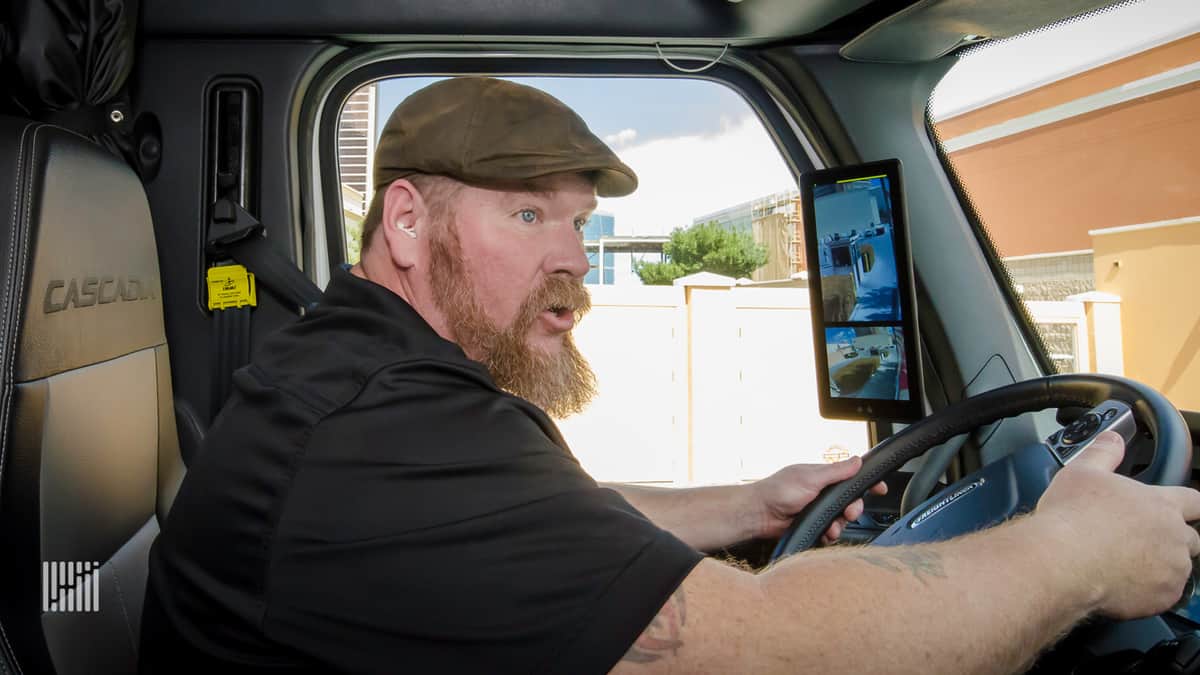The National Highway Traffic Safety Administration (NHTSA) is considering allowing cameras to replace both rearview and sideview mirrors on trucks.
In a proposal scheduled to be posted on October 10, NHTSA, an agency within the U.S. Department of Transportation, announced it will be opening a 60-day comment period to gather technical information, data, and analysis on camera monitoring systems (CMS) “so that the agency can determine whether these systems can provide the same level of safety as the rearview mirrors” required under a current vehicle safety standard known as FMVSS No. 111.
In addition to building on prior research on rearview cameras conducted by NHTSA and others, the Advanced Notice of Proposed Rulemaking (ANPRM) is being issued in response to a 2014 petition filed jointly by the Alliance of Automobile Manufacturers and Tesla to replace outside rearview mirrors on cars, and a similar petition filed in 2015 by Daimler Trucks North America for heavy trucks.
However, “both of these petitions cited improved fuel economy (not safety) as the primary benefit of allowing this change,” NHTSA points out in the proposal. “Neither petition provided objective data or analysis to aid the agency in determining the net effect on safety of amending FMVSS No. 111 to permit a CMS compliance option for rear visibility.”

The Federal Motor Carrier Safety Administration (FMCSA) is also weighing in on the issue. Last year it granted Stoneridge, Inc. a five-year exemption from an FMCSA regulation that “cross-references” NHTSA’s regulation that allows the company to install its “MirrorEye” camera system on trucks in lieu of rearview mirrors. In September, the agency opened for comment a petition filed by Vision Systems North America, which wants to be able to replace rearview mirrors on trucks with its SmartVision high-definition CMS.
NHTSA stated in its ANPRM that while it sees CMS as “promising” technology, “the agency has some lingering safety concerns that it believes should be addressed prior to deciding whether to propose amending FMVSS No. 111 to permit CMS as a compliance option for rear visibility.”
For example, it cited a news report in which the CEO of a CMS manufacturer found that 5 to 10% of motorists suffer motion sickness or have depth-of-vision problems when viewing the CMS video image. “NHTSA is not aware of any research having been done in this area, but the possibility that some percentage of drivers cannot use a CMS is something that NHTSA believes deserves further research.”
The effect “going mirrorless” will have on insurance premiums is also unknown, FreightWaves has previously reported, due to the lack of safety data.
NHTSA is asking for information based on 21 questions among the following seven categories:
- Existing Industry Standards
- System Field of View and Related Test Procedures
- Image Quality and Related Test Procedures
- Rearview Image Display Type Related Human Factors
- Side Rearview Image Display Locations, Driver Acclimation, and Related Test Procedures
- Camera Durability, Reliability, and Related Test Procedures
- System Availability when Vehicle Ignition is Off
The agency is also encouraging comments on the potential economic effects of CMS, including the cost difference between a vehicle equipped with CMS compared with rearview mirrors, and the extent to which the improved fuel economy provided by using cameras instead of mirrors would offset that increased cost.










